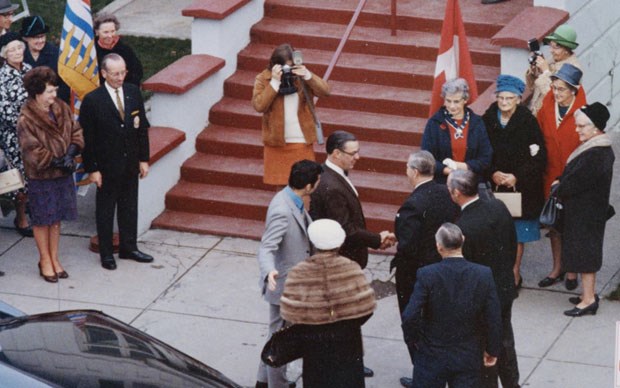Delta's century-old former municipal hall in the heart of Ladner Village is about to embark on a new chapter.
Major renovations to the tune of $2.5 million are scheduled to get underway later this year that will see Delta's most recognizable building converted to new community uses. The municipality had been eyeing a restoration for years, and now has money set aside, but the work was finally made possible thanks to a sizable federal grant announced last summer.
In 1912, the same year the Westham Island Bridge was completed, the civic building was constructed on Delta Street, the commercial hub of the municipality. Half brick and half timber, the multi-gabled building was intended to be an imposing structure that reflected the wealth of the municipality.
The local government was the chief tenant, while the police offices and morgue were in the basement. School board offices were housed upstairs and, for a time, Percy Smith, the building's caretaker and municipal clerk, also lived there.
The building was no longer being used as a municipal hall when the Delta Historical Society made a plea to Delta council in the fall of 1968 to take over the structure. At the time, a member of the society said many of the artifacts of Delta were being stored in a chicken house.
Some members of council suggested the former municipal hall would not be suitable as a museum and museum members agreed, saying the building could be a temporary solution but eventually they'd have to find a proper building to house the artifacts.
The society soon got to use the main floor of the building, celebrating a grand opening in 1969, but years later those anticipated problems persisted and had become old news.
Preferring new accommodations, the society at one point pitched a building for Paterson Park when Delta explored that site's future, but it became clear such a costly undertaking for the park, or building a new museum at all, were not high on Delta's list of priorities.
A few years ago the museum moved some of its operations to an annex further north on Delta Street. The move was seen as an interim step, as the long-term goal was a new building.
The museum also moved thousands of old documents and photos into a new climate and light controlled facility in the civic precinct called the Delta Archives and Edgar Dunning Reading
Room. Last year, when it was clear Delta was ready to commit to renovating the building, members of the society made a presentation to Delta's heritage advisory commission, indicating they wouldn't be interested in moving back into it after renovations were complete. They pitched a vision for a new, modern facility in a central location that would have the ability to accept more donations and larger objects.
"We want to build innovative, permanent exhibits that have interactive experiences built into them," society chair Barb Baydala told the commission. "And we want to create a children's interactive centre within the museum and also a mobile unit, and we would have a larger temporary exhibit space so that more stories can be told, more of a collection can be shown, and that we can host traveling exhibits."



